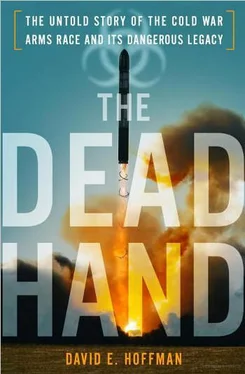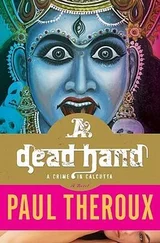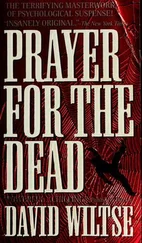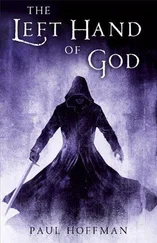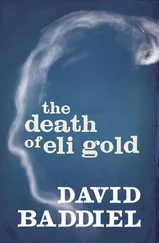The sixteen-point checklist was largely a mirror image of the Soviet contingency plans for war with the West. The KGB agents in Bonn, Brussels, Copenhagen, London, Oslo, Paris, Rome and Lisbon were told to watch out for such things as “a sharp increase in the activity of all forms of intelligence,” especially on the readiness of Warsaw Pact forces; possible positioning of agents to awaken sleeper cells in the East to “operate in wartime conditions;” closer coordination between the CIA and Western spy agencies; an “increase in the number of disinformation operations” against the Soviet Union and its allies; “secret infiltration of sabotage teams with nuclear, bacteriological and chemical weapons into the countries of the Warsaw Pact;” and expanding the network of sabotagetraining schools and émigrés and setting up sabotage teams with them. The instructions strongly reflect the police state mentality of the KGB. They were looking for signs of what they would do in the event of war, such as imposing military censorship and postal censorship, or restricting people from using the telephone and telegraph. 25
When Gordievsky returned to London on August 18, 1983, after a long break in Moscow, he resumed meeting his British handlers. Gordievsky said he immediately passed to the British the latest KGB instructions on nuclear missile attack. 26
Gordievsky had once taken part in meetings at KGB headquarters about the RYAN operation, but he regarded the whole thing as foolish. “My reaction was very simple,” he said. “I said it was just another folly.” He found his KGB colleagues also took the demands from Moscow with skepticism. “They were not seriously worried about the risk of nuclear war,” he recalled, “yet none wanted to lose face and credit at the Centre by contradicting the First Chief Directorate’s assessment. The result was that RYAN created a vicious spiral of intelligence-gathering and evaluation, with foreign stations feeling obliged to report alarming information even if they did not believe it.” Gordievsky and others fed the vicious spiral: they clipped newspapers and passed the clippings along as intelligence.
But when Gordievsky brought the cables from Moscow to the British, they took them quite seriously. They worried about the deep paranoia. They copied the documents and sent them to the CIA.
The elements were now in place for a superpower miscalculation. Andropov had urgently raised the prospect of a nuclear attack in the telegrams about the RYAN intelligence-gathering operation. Reagan had escalated the rhetoric with his “evil empire” speech and announced his futuristic Strategic Defense Initiative in March. Documents from the U.S.S. Enterprise about the navy’s F-14 flyover and the provocative naval exercises off the Soviet coast in April were now in Soviet hands. The threatening Pershing II missiles were nearing deployment in Germany. The interceptor pilots on Sakhalin Island had already been burned once, and were warned not to let it happen again.
Into this maelstrom of suspicions and fears flew a large, stray bird.
When Korean Air Lines flight 007 left Anchorage at 4 A.M. local time on August 31, the crew was well familiar with the planned route across the Pacific, which came close to the airspace of the Soviet Union before crossing Japan and heading to Seoul. The pilot of the Boeing 747 was Captain Chun Byung-in, forty-five years old, a veteran of the Korean Air Force who had logged 6,619 hours flying jumbo jets, including eighty-three flights across the northern Pacific in the previous decade. His copilot, Son Dong-Hwin, forty-seven, had made the crossing fifty-two times. And the navigator, Kim Eui Dong, thirty-two, had made forty-four flights across the ocean. In addition to the flight crew, there were twenty cabin attendants, six Korean Air Lines employees transferring back to Seoul, and two hundred forty passengers, among them sixty-two Americans, including Representative Larry McDonald, an extreme right-wing Democrat from Georgia who was chairman of the John Birch Society. 1
The flight plan was to take R20, the northernmost of five passenger airline routes across the ocean. These highways in the sky were fifty nautical miles wide and one thousand feet high. Route R20 was nearest the Soviet Union. The flight’s departure from Anchorage was delayed to account for headwinds, and to bring the plane into Seoul’s Kimpo International Airport at precisely 6 A.M. on September 1.
Soon after takeoff, an error was made. The autopilot was improperly set and the crew did not notice. Instead of picking up the Inertial Navigation System, which would have steered the plane on the proper route, the autopilot was instead set at a constant magnetic heading. This may have been caused by the failure to twist a knob one further position to the right.
The flight began to drift northward of Route R20. About 50 minutes into the flight, the crew of KAL 007 reported crossing Bethel, the first waypoint, at 31,000 feet. They didn’t know it, but the plane was already 13.8 miles north of Bethel and outside the air route.
As they crossed the ocean, Chun and his crew saw nothing amiss, according to their communications with air traffic controllers. After Bethel, at the next waypoint, they reported all was well, but they were sixty-nine miles north of their route. At the next spot, they were 115 miles off course. After five hours in the air, they reported passing another waypoint, when in fact they were 184 miles north, heading directly toward the Kamchatka Peninsula of the Soviet Union. At one point the flight crew exchanged messages with another passenger plane that reported dramatically different winds—this should have alerted them they were off course. But it did not. The voices in the cockpit showed no alarm. They talked about mundane matters. One of the crew remarked, “Having a dull time…”
“I have heard there is currency exchange at our airport,” one said.
“What kind of money?” answered another.
“Dollar to Korean money,” came the response.
“Captain, sir, would you like to have a meal?” asked a cabin attendant.
“What?”
“Meal, is it already time to eat?”
“Let’s eat later.”
Another plane flew in the sky that night, circling close to the Soviet Union, an RC-135 four-engine jet used for intelligence missions by the U.S. air force. The RC-135, a converted Boeing 707, was a familiar spy plane, known to the Soviets. Osipovich, the interceptor pilot, recalled he had chased it many times. The RC-135 flights were monitoring Soviet ballistic missile tests on an intelligence mission known as Cobra Ball. The plane was crammed with cameras and special windows down one side to photograph a Soviet missile warhead as it neared its target. The upper surface of the wing on the side of the cameras was painted black to avoid reflection. The RC-135s were based on Shemya Island, a remote rocky outcropping in Alaska’s Aleutian Islands.
Soviet missile tests often aimed at the Kamchatka Peninsula. How the missiles landed could help the United States monitor arms control treaties and look for violations. The pictures could show how many MIRVs came from a missile and the final trajectory. The RC-135 planes flew in circular or figure-eight orbits with camera lenses aimed at the Soviet coastline, in anticipation of a test.
On the night of August 31, a missile test was expected and the RC-135 loitered in the sky, waiting. The RC-135 had a wingspan of 130 feet, compared to the 747, which stretched 195 feet and 10 inches across. Both had four engines, located under the wings. The 747 featured a prominent hump on the front of the fuselage for the upper passenger deck. As the RC-135 circled, at about 1 A.M., the larger 747 flew by, seventy-five miles south.
Читать дальше
